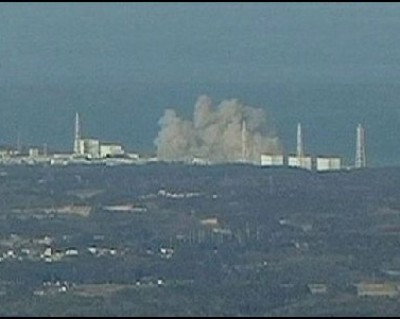By Robert Kelly
St Louis Post-Dispatch
Wednesday, May. 28 2008
Thousands of baby teeth, almost all collected from St. Louis-area residents in
the 1950s and 1960s, will finally be used in a comprehensive study aimed at
learning whether fallout from atomic bomb tests increased the cancer risk for
Americans born in those Cold War years.
The nonprofit Radiation and Public Health Project in New York announced last
week that a $15,000 donation from the Oregon Community Foundation of Portland,
Ore., would allow the yearlong study to begin. The rest of the nearly $37,000
project cost is being covered by other private contributors, project officials
said.
Almost 85,000 baby teeth left from a study conducted in the early 1960s at
Washington University will be used in the new study. They were uncovered in
2001 in an old ammunition bunker at the university’s Tyson Research Center.
Each tooth is enclosed in a small envelope and clipped to a 3×5 card with basic
information about the tooth donor. Most of them were born in the late 1950s or
early 1960s and lived in the St. Louis area as children.
They were part of the St. Louis Baby Tooth Survey, in which nearly 300,000 area
children sent their teeth to the Greater St. Louis Citizens Committee for
Nuclear Information.
Scientists used the teeth to determine that children were absorbing radioactive
fallout from nuclear bomb tests. Those findings helped lead to a 1963 treaty
banning atmospheric tests of nuclear weapons.
Joseph Mangano, executive director of the Radiation and Public Health Project,
said last week in a telephone interview from New York that his research group
had had possession of the 85,000 teeth since 2001 but lacked the money until
now to begin a full study of the cancer risk posed by the nuclear tests.
Now, he said, the research group will identify 100 tooth donors who later
developed cancer, plus 200 healthy donors. A lab will then test their teeth for
levels of strontium 90, a radioactive chemical found in bomb fallout and
nuclear reactors.
If the teeth of donors with cancer have a higher average strontium 90 level, a
link with the fallout would be suggested. Then the research group would proceed
with a more detailed study, Mangano said. At the end of the one-year project,
the researchers will submit an article to a medical journal for publication, he
said.
“This actually extends the Washington University study,” he said. “We now have
much more sophisticated machines to do the study.”
The emergence of the Internet also allows the scientists to find many of the
tooth donors from years ago and to question them about their health.
Mangano said it was especially important to focus the study on St. Louis,
calling the city “probably the hardest-hit large American city by bomb
fallout,” based on official U.S. Public Health Service measurements of
radiation in milk.
Scientists identified a “milk pathway” by which fallout from nuclear testing in
the 1950s and 1960s contaminated pastures. Anyone who drank milk from cows that
grazed there could have been exposed to radiation.
Mangano said the Washington University study showed there was a rapid decline
in strontium 90 in baby teeth collected after the nuclear test ban went into
effect. But that study did not look at a potential link between cancer rates
and fallout from the atomic bomb tests, he said.
“Our whole point is to try to determine the cancer risk to the baby boomers who
were exposed to fallout,” he said. “After 50 years, we still don’t know much
about that.
Mangano said that strontium 90 decayed over time, but that nearly three-eighths
of the radioactive chemical originally found in the teeth could still be
detected.
“For this first year, we will be studying only male tooth donors,” he added.
“First, it is much easier to locate males at current addresses, since many
girls donating teeth in the 1960s have changed their names. Second, the death
rate is much higher for males, and may yield a larger sample of donors who are
either living with cancer or have died of the disease. Seven percent of males
and 3 percent of females who were young children in the 1960s are now deceased.”
Eric Pickles, 50, of Fenton, recalled donating some of his baby teeth for the
old Washington University study. He works at the Chrysler plant near his home
and said he was in relatively good health.
“I have diabetes now, and it ran in my family,” Pickles said.
Although he doesn’t think his diabetes is related to radioactive fallout, he
said he was wondering what the new baby tooth study would find about long-term
health effects from the bomb tests. He said he’d be glad to cooperate with the
scientists conducting the new study. “I hope something good comes of it,” he
said.

